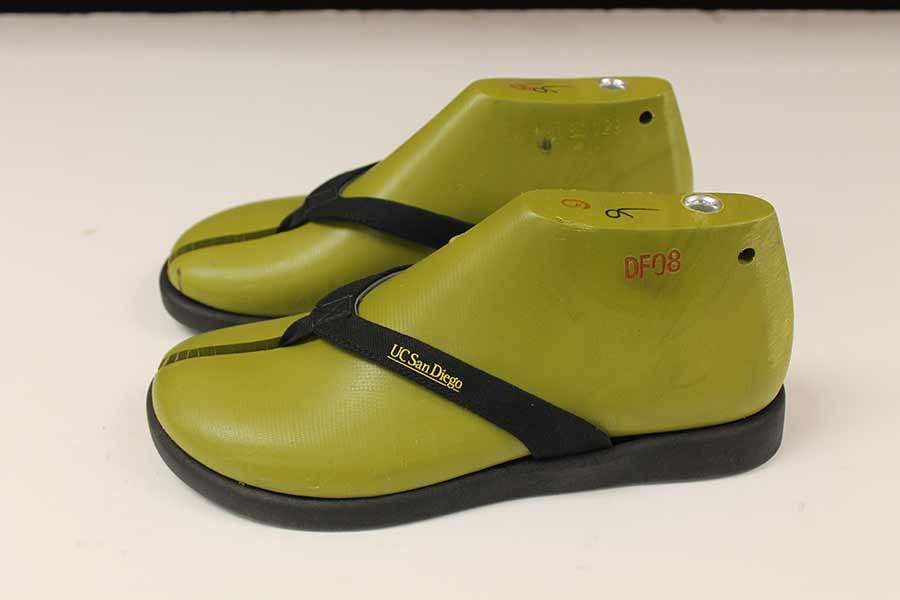NASA Finally Unlocks Mystery of Aurora 'Pearl Necklaces' and How They Form On Earth And Elsewhere
With newly advanced computing power, NASA has unlocked some answers around the phenomenon of space auroras and how they form.

A lot of entrepreneurial energy has been thrown into using algae as a replacement for petroleum-based plastics in the creation of consumer goods, and now some California researchers have applied this technology to one of the ocean's greatest polluting burdens—flip flops.
The world's most popular shoe, the flip flop accounts for a huge amount of plastic waste that ends up in the ocean: Some models have suggested they account for a quarter of all plastic in our seas.
UC San Diego partnered with the startup company Algenesis Materials to produce a commercial grade polyurethane foam from algae oil to create a sturdy flip flop that will biodegrade in around 16 weeks.
With a biomass content of around 52%, the flip flops are still entirely biodegradable, but that hasn't stopped the collaboration from looking to create a 100% biomass shoe.
"People are coming around on plastic ocean pollution and starting to demand products that can address what has become an environmental disaster," said Tom Cooke, president of Algenesis, to UCSD news. "We happen to be at the right place at the right time."
In testing to see whether or not the polyurethane algae flip flops would degrade, Steven Mayfield, professor of biology at UC San Diego, and his team buried them in compost and normal soil.
The world's most popular shoe, the flip flop accounts for a huge amount of plastic waste that ends up in the ocean: Some models have suggested they account for a quarter of all plastic in our seas.
UC San Diego partnered with the startup company Algenesis Materials to produce a commercial grade polyurethane foam from algae oil to create a sturdy flip flop that will biodegrade in around 16 weeks.
With a biomass content of around 52%, the flip flops are still entirely biodegradable, but that hasn't stopped the collaboration from looking to create a 100% biomass shoe.
"People are coming around on plastic ocean pollution and starting to demand products that can address what has become an environmental disaster," said Tom Cooke, president of Algenesis, to UCSD news. "We happen to be at the right place at the right time."
In testing to see whether or not the polyurethane algae flip flops would degrade, Steven Mayfield, professor of biology at UC San Diego, and his team buried them in compost and normal soil.
Having discovered the 16-week decomposition time frame, Mayfield et al. also discovered that the varieties of bacteria and other microorganisms that were working to break down the shoe left parts of it intact in a way that would allow them to be reused.
"We took the enzymes from the organisms degrading the foams and showed that we could use them to depolymerize these polyurethane products," said Mayfield. "We then showed that we could isolate the depolymerized products and use those to synthesize new polyurethane monomers, completing a ‘bioloop.'"
Monomers and polymers refer to the molecular structures that make up plastic.
"Our polyurethane can be used for foam cushions in chair seats or car seats, padding in luggage straps, yoga mats, foam insulation, and even car tires," Mayfield told Digital Trends.
The hard work of the scientists like Mayfield, and the manufacturers at Algensis, led to the establishment of the Center for Renewable Materials at UC San Diego, which focuses on the development of sustainable solutions to consumer plastic pollution using algae.
Pass The Positivity On By Sharing This Fascinating Story With Your Friends On Social Media…
Be the first to comment